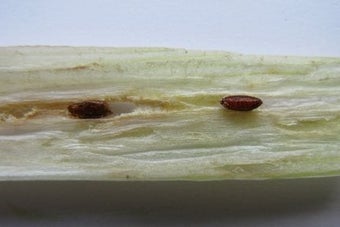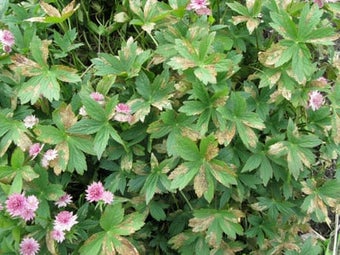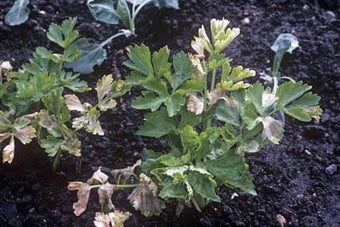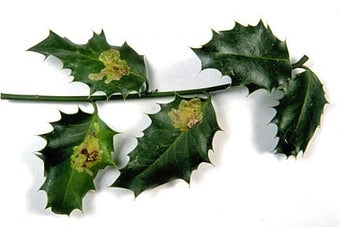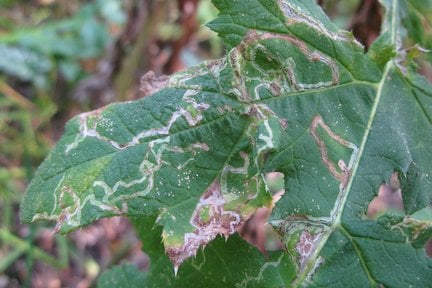
Quick facts
Common name - Echinops leaf miner
Scientific name - Phytomyza bipunctata
Plants affected - Globe thistle (Echinops)
Main cause - Larvae of a leaf-mining fly tunnelling in the foliage
Timing - Spring and summer
What is echinops leaf miner?
Echinops leaf miner is a small fly which develops as larvae that feed within the foliage of wild and cultivated globe thistle (Echinops) plants.
The fly belongs to the family Agromyzidae, there are several hundred species in this family known to occur in Britain and many are leaf miners as larvae. More information on Agromyzidae is available from the .
Around 900 insect species, including some beetles, sawflies and moths create leaf mines as larvae in Britain. More information about some of these insects can be found at .
Symptoms
The adult flies are ash grey and about 2 mm long. They feed by rasping the leaf surface, causing many small pale spots on the upper leaf surface. More significant mines are caused by the creamy white larvae. They eat the internal tissues of the leaves and cause whitish brown discoloured blotches. The mines typically have a pale edge around the darker brownish centre.
There are probably at least two generations during the summer and by August leaves can be affected by several mines.
Management
Echinops plants will survive and produce flowers, even when there is extensive leaf mining, so it is not necessary to control this insect.
- Any damage caused by this leaf mining fly can be tolerated
- Leaf miners can be part of a healthy balanced garden, most species will have natural enemies including parasitoid wasps. Birds such as blue tits can sometimes open mines to consume the larvae within
Biology
Echinops leaf miner has at least two generations during the summer. The females deposit their eggs on the foliage during April and July. The eggs hatch into legless larvae that tunnel into the foliage where they eat the internal tissues. The mines are linear forming silvery lines throughout the leaf, lines of black excrement (frass) are often visible within these mines. When fully fed, the larvae pupate within the mines.

